Sticky residue on your griddle can cause food to stick and create a mess. It can also trap bacteria and make it difficult to clean. To ensure that your griddle is sanitary, it’s important to remove any sticky residue from its surface regularly.
Griddles are one of the most versatile pieces of cooking equipment that you can have in your kitchen. They can be used to cook virtually anything, from pancakes and eggs to burgers and steaks. Sticky residue and burnt-on food can quickly build up, making it difficult to clean the griddle.
However, there are a few simple tips that can help you remove sticky residue and burnt-on food from your griddle with ease. First, ensure that the griddle is cool before cleaning it.
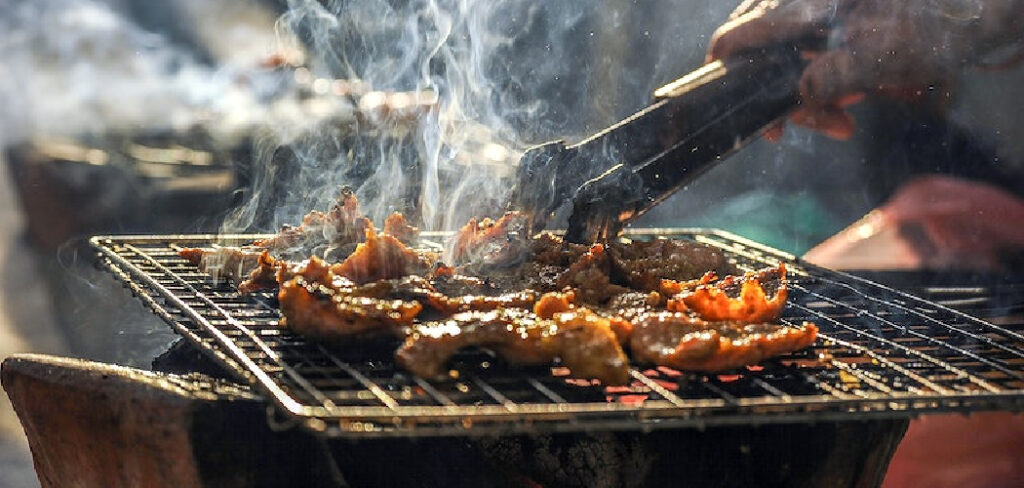
Then, use a spatula or scraper to remove any loose food debris. Next, either wipe the griddle down with a hot soapy cloth or degreaser. Finally, use a brush or steel wool pad to scrub away any stubborn residue. In this blog post, You will learn in detail how to remove sticky residue from griddle.
Step-by-Step Processes for How to Remove Sticky Residue From Griddle
Step 1: Inspect the Sticky Residue
Check the sticky area to identify what type of residue it is before starting. Preheat your griddle surface and wipe away with a clean cloth. If the residue is sticky or thick, use a spatula to scrape away as much of it as possible. This will make the cleaning process more manageable and less time-consuming.
You may also want to consider using a scraper with a flat edge specifically designed for removing sticky residue from griddles. This tool can help you remove stubborn residue without damaging the surface of your griddle.
Step 2: Clean the Griddle Surface
Once you have removed any excess residue, spray the griddle surface with a kitchen degreaser and allow it to sit for 5 minutes. Using a non-abrasive scrubbing pad, gently scrub the surface. Wipe the surface clean with a damp cloth and repeat as needed. This process should remove most of the sticky residue from your griddle.
If you do not have a kitchen degreaser, you can create your own by mixing equal parts of water and white vinegar. This natural cleaner is just as effective at removing sticky residue from griddles.
Step 3: Create a Baking Soda Paste
Mix together 1/4 cup of baking soda with enough warm water to create a paste-like consistency. Rub it onto the sticky residue area and let it sit for 10-15 minutes. Scrub the residue using a nylon brush and warm water. Wipe away any excess paste or residue with a damp cloth.
It’s important to note that baking soda can also be used as a natural cleaner for your griddle. It is gentle yet effective, making it a great alternative to harsh chemicals.
Step 4: Use Cooking Oil to Remove Sticky Residue
If the residue is still sticking after the baking soda paste, use cooking oil to loosen it up. Put a couple of drops of cooking oil onto a clean cloth and rub it over the sticky area until the residue begins to lift off.
You can also use this method as a preventative measure by applying a light coating of cooking oil to the surface of your griddle before each use. This will help prevent any residue from sticking and make it easier to clean in the future. It will also help to season your griddle and create a non-stick surface.
Step 5: Clean Again with Kitchen Degreaser
Once you have removed as much residue as possible, spray the griddle surface with a kitchen degreaser and allow it to sit for 5 minutes. Using a non-abrasive scrubbing pad, gently scrub the surface. Wipe the surface clean with a damp cloth and repeat as needed.
You can also use a commercial griddle cleaner specifically designed to remove tough residue. Just be sure to read the instructions carefully and follow the recommended safety precautions.
Step 6: Use White Vinegar
If the residue is still sticking, use white vinegar to remove it. Put some white vinegar onto a clean cloth and rub it over the residue until it begins to lift off. White vinegar is a natural cleaner that can effectively dissolve and remove stubborn residue without damaging the surface of your griddle.
You can also use white vinegar as a preventative measure by mixing it with water in a spray bottle and using it to clean your griddle after each use. This will help prevent any residue from building up and make future cleaning easier.
Step 7: Remove Remaining Residue with Solvent
If the sticky residue is still sticking, use a solvent such as acetone or rubbing alcohol to dissolve it. Put some of the solvents onto a clean cloth and rub it over the residue until it begins to lift off. Be sure to wear gloves and work in a well-ventilated area when using solvents.
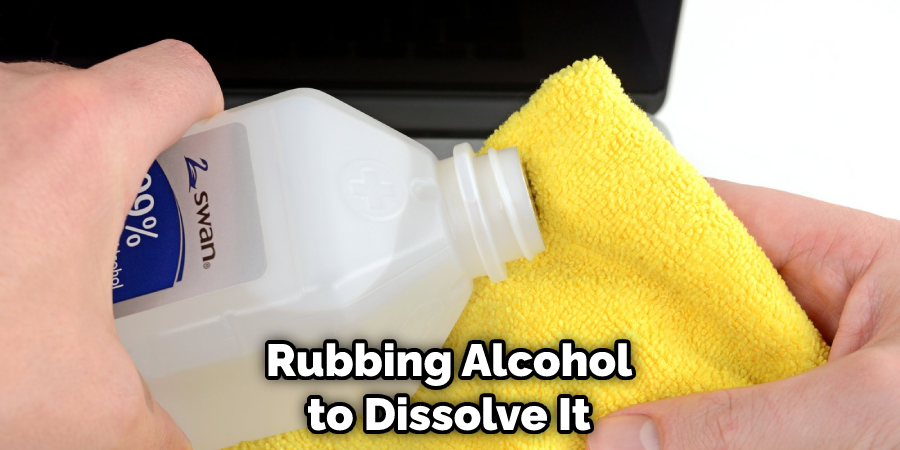
You can also use this method as a last resort or for particularly stubborn residue. Just be sure to thoroughly clean the surface with a kitchen degreaser and hot soapy water afterwards to remove any remaining residue from the solvent.
Step 8: Clean and Dry with a Cloth
Once you have removed as much residue as possible, dry the griddle surface with a clean cloth, making sure to get into any crevices that may still contain sticky residue. You can also use a paper towel to absorb any excess moisture. This final step will help ensure that your griddle is completely clean and ready for your next cooking adventure.
You can also use a griddle stone to help prevent residue and buildup on your griddle surface. Simply use it to scrub away any tough residue before cleaning with hot, soapy water.
Step 9: Apply Cooking Oil to the Griddle Surface
Once the griddle surface is completely dry, apply a light coating of cooking oil to keep it from becoming sticky again. Wipe away any excess oil with a clean cloth. Your griddle is now ready to use.
By following these simple steps on how to remove sticky residue from griddle, you can easily remove any sticky residue from your griddle and keep it in top condition for all your cooking needs. With proper maintenance and cleaning, your griddle will provide delicious meals for years to come. Enjoy!
Tips for How to Remove Sticky Residue From Griddle
- Make sure you have adequate ventilation when using cleaning products or chemicals.
- Use a scraper made of non-abrasive material to gently scrape away sticky residue from the griddle.
- Soak a cloth in hot water and place it over the area with sticky residue for several minutes to loosen it up before scraping.
- Mix baking soda with warm water to form a paste and apply it to the affected area. Scrub gently with a non-abrasive sponge.
- Use a commercial degreaser to loosen and remove sticky residue from your griddle. Be sure to follow the product instructions carefully.
- Once you have removed the sticky residue, use hot water and a non-abrasive sponge or cloth to scrub away any remaining residue.
- Dry your griddle thoroughly with a dry cloth after you have finished cleaning.
- To prevent sticky residue from forming in the future, apply a light coat of cooking oil to the griddle before and after each use.
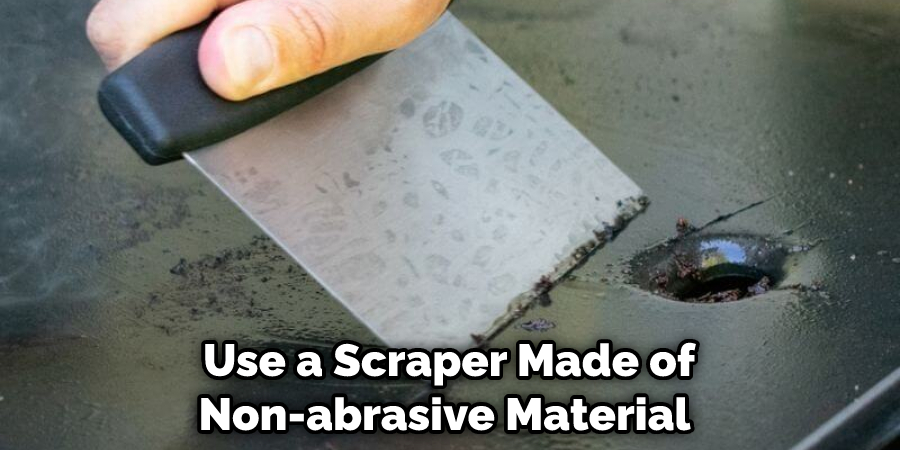
What Can Household Items Be Used to Remove Sticky Residue From a Griddle?
Removing sticky residue from a griddle can be difficult, but some household items can help. To dissolve sticky residue without causing damage to your griddle, try using warm water and mild dish soap, white vinegar, or cooking oil.
Warm Water and Dish Soap:
Start by cleaning the griddle with warm water and mild dish soap. Scrub the surface with a nylon scrubber to remove as much of the sticky residue as possible. If this does not work, try using more pressure or add a little baking soda to help dissolve the stubborn residue.
White Vinegar:
White vinegar can be used to break down tough, dried-on grease and residue. Soak a cloth in white vinegar and place it on the affected area for 10-15 minutes. The acidity of the vinegar will help soften and dissolve any remaining residue. Use a nylon scrubber to remove the residue after soaking.
Cooking Oil:
Rubbing oil onto your griddle can also help dissolve the sticky residue. Use a paper towel to spread a light coat of oil onto the affected area. Let the oil sit for 10-15 minutes, and then scrub with a nylon brush to remove any remaining residue.
How Often Should You Clean the Griddle to Prevent a Sticky Residue From Building Up?
The frequency of cleaning the griddle will depend on how often you use it. A good rule of thumb is to clean your griddle after every use, which will help prevent sticky residue from building up over time. Regularly wiping down the griddle with a damp cloth or sponge can also lower the chances of a sticky residue build-up. Additionally, it is important to regularly check the griddle for any food debris or charred bits that may be stuck on its surface.
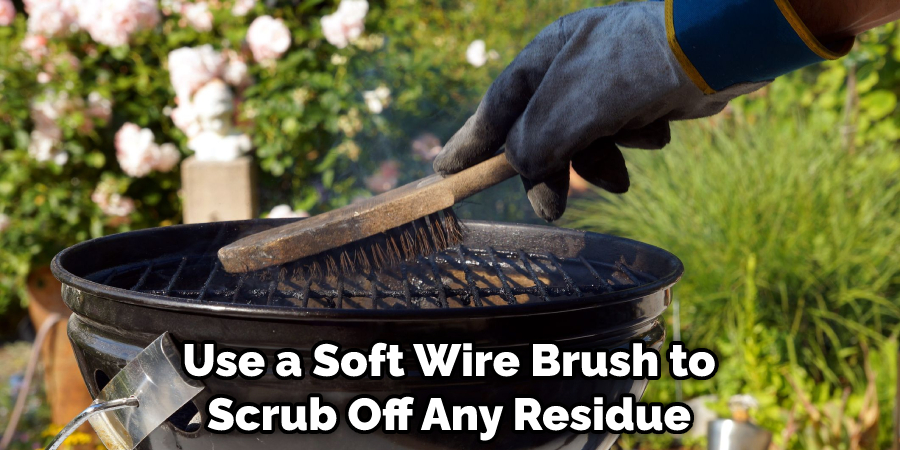
To ensure adequate cleaning of the griddle and prevent sticky residue from building up, you can also use a soft wire brush to scrub off any residue and debris. After brushing, wipe down the griddle with a damp cloth or sponge. If you experience difficulty removing any stubborn residue, consider scrubbing the griddle with baking soda and water to help loosen the buildup.
Regularly cleaning your griddle after every use and thoroughly checking for any food debris or charred bits can reduce the chances of a sticky residue build-up. Commercial cleaning solutions are also available to help remove sticky residue and other dirt from the griddle surface. However, it is important to read the instructions carefully before using any of these products, as some may contain harsh chemicals that can damage your griddle.
How Do You Prevent Sticky Residue From Forming in the Future?
Once you’ve successfully removed the sticky residue from your griddle, there are a few steps you can take to prevent it from happening again. Here are a few tips on how to prevent sticky residue from forming:
- Use a paper towel to remove excess oil or grease before, during, and after cooking.
- Clean the griddle with warm water and dish soap immediately after use. This will eliminate residual oils that may be left over from cooking.
- Once the griddle has been cleaned, coat it with a thin or spray cooking oil layer. This will create a barrier between the food and the griddle surface, which can help prevent residue from forming.
- Make sure to avoid using metal utensils on the griddle when cooking. Metal utensils can cause scratches on the non-stick surface, resulting in residue buildup.
Following these steps will help ensure that your griddle remains free of sticky residue and is easy to clean.
Is It Necessary to Hire Any Professional to Remove Sticky Residue From Griddle?
A griddle is a great way to cook food evenly, but it can be painful to clean. Sticky residues can build up quickly, making removing them difficult without a professional’s help. However, there are a few simple steps that you can take to remove sticky residue from your griddle without hiring a professional.
First, make sure that the griddle is turned off and cooled completely. Next, use a soft cloth or sponge to wipe down the griddle with soapy water. You can try using a mild abrasive cleaner if the residue is still present. Be sure to rinse the griddle well after cleaning and dry it with a towel before using it again. With a little elbow grease, you should be able to remove most sticky residues from your griddle without the help of a professional.
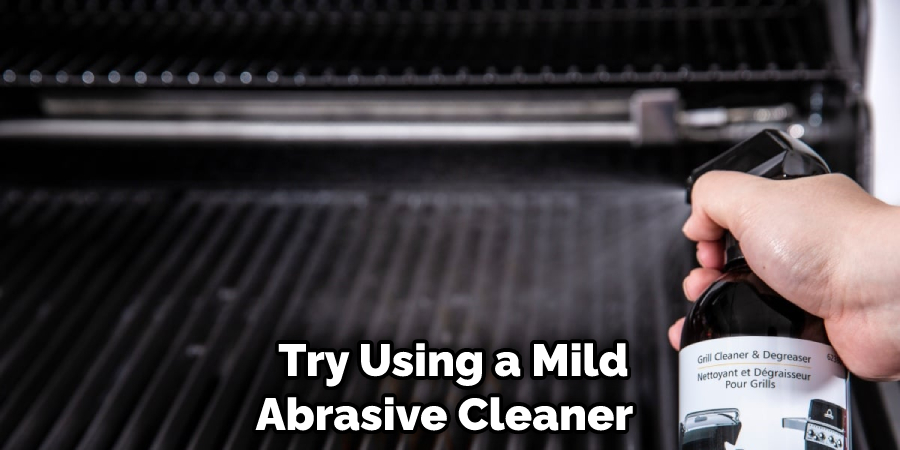
How Much Will It Cost?
The cost of cleaning a griddle to remove sticky residue will vary depending on the methods and products used. Using household items such as warm water, dish soap, white vinegar, and cooking oil can be affordable options. However, if you choose to use commercial degreasers or hire a professional service, it may be more expensive. Additionally, the cost will also depend on the size and type of griddle you have.
Cleaning your griddle regularly and preventing sticky residue buildup can save you money in the long run. It will also help extend the life of your griddle, allowing you to enjoy delicious meals for years to come. So, be sure to give your griddle some TLC after each use to keep it clean and free from sticky residue. So, don’t hesitate to try out some of these tips and techniques for a hassle-free and enjoyable cooking experience on your griddle. Happy cooking!
Frequently Asked Questions:
Q: Can I Use a Steel Wool Pad to Remove Sticky Residue From My Griddle?
A: No, you should avoid using steel wool or other abrasive materials on your griddle as they can scratch the surface and damage the non-stick coating. You can use a nylon scrubber or soft cloth instead.
Q: Can I Use a Metal Spatula on My Griddle?
A: It is not recommended to use metal utensils on your griddle as they can cause scratches and damage the non-stick surface, leading to sticky residue buildup. It is best to use silicone or wooden utensils instead.
Q: Can I Use Oven Cleaner on My Griddle?
A: No, it is not recommended to use oven cleaner on your griddle as it can contain harsh chemicals that may damage the surface. Stick to using mild dish soap or natural cleaning solutions like vinegar and oil.
Q: How Can I Prevent Rust From Forming on My Griddle?
A: To prevent rust from forming on your griddle, make sure to dry it thoroughly after cleaning and before storing it. You can also lightly coat the griddle with oil before storing it to prevent moisture from seeping in and causing rust. Regularly inspect your griddle for any signs of rust, and if present, treat it immediately to prevent further damage.
Conclusion
Removing sticky residue from your griddle regularly is important, but it can be tricky. Fortunately, with the right tools and techniques, anyone can successfully clean off any sticky messes. Try using a scouring pad or steel wool combined with warm water and dish soap to scrub away the residue. You might also try mixing white vinegar or baking soda with water then wiping down the griddle with a paper towel.
Finally, you can safely use commercial products like Goo Gone to remove sticky residue from the griddle surface. Whichever method you choose, ensure it is safe for your type of cookware and follow all instructions carefully. With patience and effort, you can get rid of any sticky residue from your griddle and keep it looking new. I hope this article has been beneficial for learning how to remove sticky residue from griddle. Make Sure the precautionary measures are followed chronologically.
Professional Focus
Angela Ervin, a former interior designer turned blogger, specializes in kitchen design and renovations. Through her website, she blends her passion for cooking with design expertise, sharing practical and creative ideas. Known for balancing functionality and beauty, Angela’s insightful content has made her a trusted voice in home design and lifestyle.
About the Author
Angela Ervin, an experienced interior designer and blogger, combines her passion for kitchen renovations with storytelling. Living in Petersburg with her family, she enjoys cooking and testing her projects firsthand. Known for her humor and relatable style, Angela shares creative, functional design insights through her content, making her a trusted voice in home design.
Education History
University: Virginia Commonwealth University
Degree: Bachelor of Fine Arts (BFA) in Interior Design
- Angela’s education at VCU focused on mastering core interior design principles, including spatial planning, color theory, materials selection, and sustainable design practices.
- She gained hands-on experience through studio projects and collaborative design exercises, which honed her ability to create functional and aesthetically pleasing environments.
- Her coursework also emphasized problem-solving and practical applications of design, preparing her for real-world projects like her self-directed kitchen renovations.
- The program’s strong foundation in both technical skills and creative expression shaped Angela’s ability to seamlessly integrate form and function in her work.


